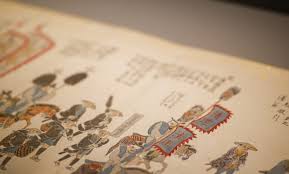If you’re a fan of board games that combine strategy, resource management, and economic planning, then the Goa game is a must-try. Released in 2004 by designer Rüdiger Dorn, “Goa” has become a cult favorite among serious gamers. Known for its intricate mechanics and high replay value, this Euro-style game transports players to the era of Portuguese spice trading in India, where they compete to build colonies, manage resources, and expand their trade empires.
In this article, we’ll dive into the world of the Goa board game, exploring its gameplay, components, strategy tips, and why it continues to be relevant two decades after its release.
What is the Goa Game?
The Goa game app is a strategy board game set during the Age of Exploration. Players assume the role of Portuguese spice traders looking to gain wealth and influence by expanding their trade empires in the Indian subcontinent. The game is played over two rounds (or eras), each consisting of four turns. During each turn, players engage in actions like bidding for tiles, developing colonies, increasing their income, and shipping spices.
Despite its historical backdrop, Goa is not a game about warfare or conflict. Instead, it focuses on economic efficiency and calculated decisions, rewarding players who think several steps ahead.
Components of the Goa Game
The game is beautifully designed and includes:
- Player boards to track individual development
- A main game board with a 5×5 grid of tiles for auction
- Colonies, ships, and spices as resources
- Action cards and development markers
- An auction system that drives strategic choices
The visual appeal of the Goa game complements its deep gameplay, making it a great addition to any board game collection.
How to Play Goa
1. Auction Phase
At the beginning of each round, a 5×5 grid of tiles is laid out. Players take turns placing auction markers and bidding on tiles that offer benefits like spices, colonists, ships, or development actions.
2. Action Phase
Players take up to three development actions per round. These actions allow you to:
- Found colonies
- Gain income
- Advance on development tracks (e.g., spice production, colonization, shipping)
- Draw action cards for special benefits
3. Colonization
Founding colonies is a key component of the Goa game. Each colony provides specific spices that are essential for completing other development goals.
4. Shipping and Income
The game has a strong economic core. You need ships to transport spices and earn money, which you’ll need to fund future auctions and developments.
Strategy Tips for Winning the Goa Game
- Plan Your Bids Wisely
The auction phase can make or break your strategy. Don’t overspend early, but also don’t be too passive. Secure tiles that support your long-term goals. - Balance Your Development
Advancing on multiple development tracks ensures you’re not too dependent on one strategy. Diversification pays off. - Use Colonies Strategically
Some colonies produce more valuable spices than others. Secure them early to maintain a steady spice income. - Don’t Underestimate Income
Having enough money gives you flexibility in both auctions and actions. Invest in income upgrades early. - Maximize Each Action
Since you get only a limited number of development actions per round, make each one count. Use action cards strategically for bonus efficiency.
Why the Goa Game Stands Out
1. Depth Without Complexity
Goa offers a deep strategy experience without overwhelming rules. Once you understand the basic mechanics, the game flows smoothly, allowing you to focus on strategy.
2. High Replay Value
The randomized tile grid and player-driven auction system ensure no two games are the same. You’ll find yourself wanting to try different paths to victory.
3. Tense But Fair Competition
There’s little direct conflict in the Goa game, but the competition for tiles, colonies, and developments creates a tense and satisfying experience.
4. Elegant Eurogame Design
If you love games like Puerto Rico, Agricola, or Power Grid, you’ll appreciate Goa’s balance of economy, auction, and planning.
Goa Game in Modern Times
While originally published in 2004, the Goa game remains relevant in today’s board game landscape. It received a reprint in 2012 with minor updates and revised rules, including an enhanced two-player variant. Even in an era of flashy components and app-assisted games, Goa holds its own as a thoughtful, strategic experience.
FAQs About the Goa Game
1. Is the Goa game suitable for beginners?
Goa is more suited for intermediate to advanced board gamers due to its strategic depth and planning requirements. Beginners might find the game a bit overwhelming at first, but it’s highly rewarding once you understand the flow.
2. How long does a game of Goa typically take?
A standard game lasts around 90 to 120 minutes. With experienced players, it can be completed faster.
3. Can the Goa game be played with 2 players?
Yes, though it’s best with 3–4 players. The reprinted edition includes updated rules for 2-player gameplay, making it a viable option.
4. Is the Goa game available digitally?
As of now, Goa doesn’t have an official digital version. However, some fan-made modules may exist on platforms like Tabletop Simulator or Board Game Arena.
5. How does Goa compare to other auction-based games?
Goa’s auction system is tightly integrated with the game’s economy and development mechanics. Unlike purely auction-based games, Goa combines auctions with long-term planning, making it a hybrid experience.
Conclusion: Is the Goa Game Worth Playing?
Absolutely. The Goa game offers an incredibly rich and rewarding experience for fans of strategic board games. With its elegant mechanics, historical theme, and engaging gameplay, Goa stands the test of time. It may not be the flashiest game on the shelf, but it offers a deep level of satisfaction for those who enjoy planning, resource management, and strategic auctions.

